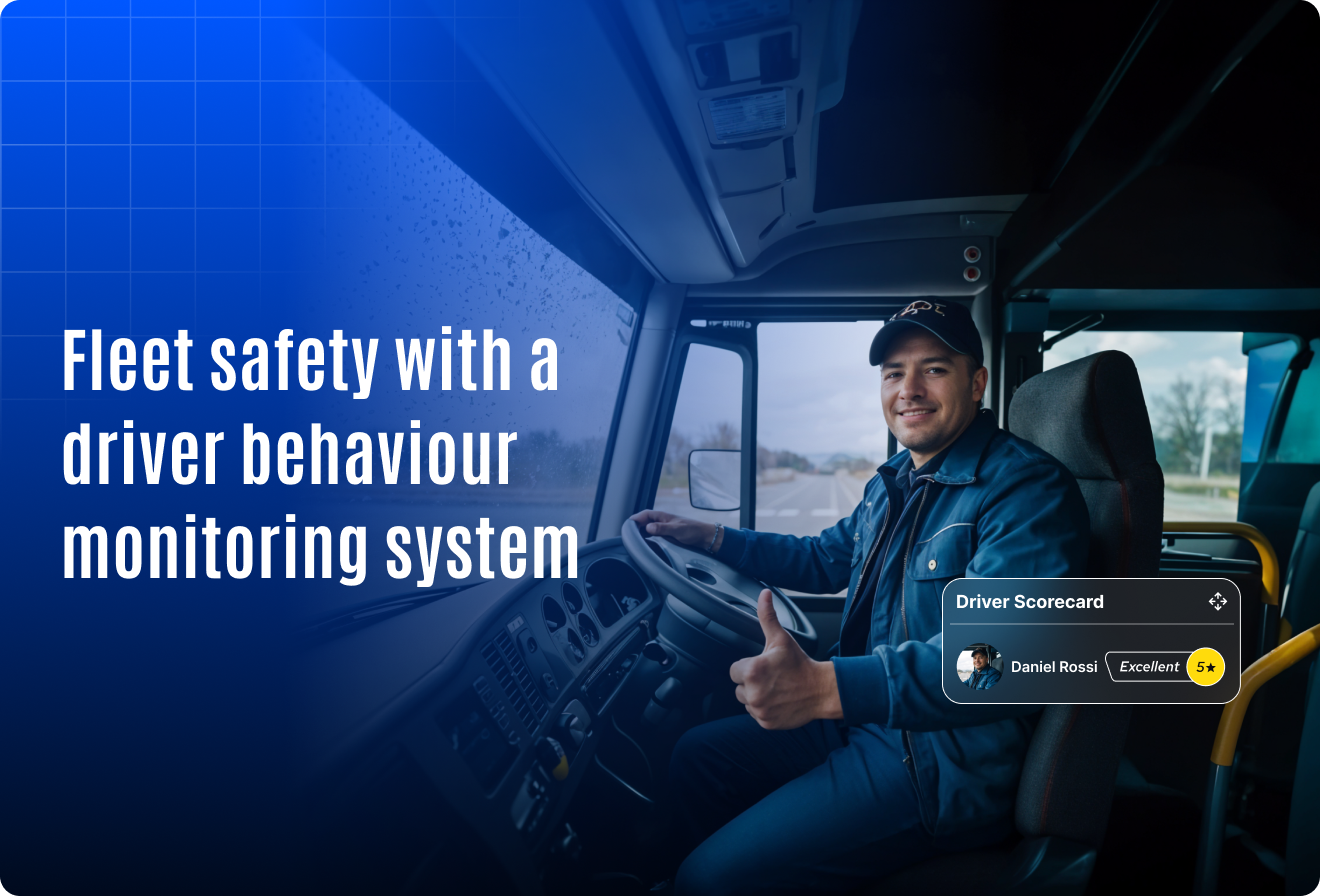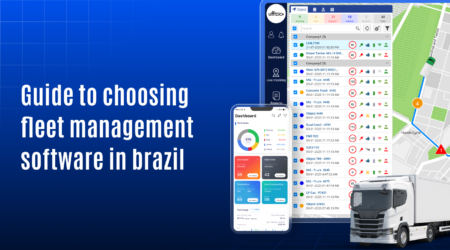Transforming Fleet Safety with a Driver Behaviour Monitoring System

You’re juggling tight delivery schedules, rising fuel costs, unpredictable traffic, and constant pressure to reduce accidents. Fleet accidents, vehicle damage, and rising costs often trace back to one root cause: driver behavior.
Yet, many fleets still don’t track how vehicles are handled on the road. They see movement on the map but miss what really matters inside the cabin. “In the middle of everything, it’s easy to miss one key thing: driver performance on the road.” Think about it. Harsh braking. Speeding through turns. Skipping rest stops. These aren’t just bad habits. They’re silent threats to your business.
In fact, 94% of road accidents are caused by human error, putting the spotlight squarely on driver decisions. A driver behaviour monitoring system brings these risks to light. It helps you spot dangerous habits early, protect your vehicles, and build a safer fleet. Let’s be honest, managing a fleet isn’t easy. That’s why smart fleets are turning to driver behaviour tools for better control.
What Is a Driver Behaviour Monitoring System?
A driver behaviour monitoring system tracks how vehicles are driven, not just where they go. Using sensors, GPS, and sometimes in-cab cameras, it collects real-time data on:
- Sudden acceleration or braking
- Idling and off-route driving
- Signs of fatigue or distraction
- Speed limit violations
This system gives fleet managers a live view of risky driving patterns so they can act before accidents happen.
How Does a Driver Monitoring System Work?
It uses telematics, sensors, and cameras to track driving behavior, not just vehicle location.
- Tracks: acceleration, braking, speed, cornering, idling
- Alerts: sent for unsafe actions
- Scores: measure driver performance
- Dashboards: show trends and comparisons
- Video (optional): provides incident context
It’s a fast, data-backed way to improve fleet safety and driver accountability.
Mistakes That Drain Your Profit
Bad driving behaviour isn’t just unsafe it hits your bottom line.
- Missed deliveries from accidents
- More wear and tear costly repairs
- Higher fuel use from poor habits
- Increased insurance premiums
- Low driver morale from misjudged blame
Ignoring this risk can damage your bottom line just as much as a delayed shipment or lost contract. The solution starts with visibility and accountability. And that means understanding not just routes and stops but real driving behaviors.
Top Risky Driving Habits (And How to Fix Them)
Let’s break down the most common risky driving behaviors and how this system helps address them:
- Speeding
Increases accident risk and fuel use
Sends alerts, tracks trends, promotes safe speeds - Harsh Driving
Leads to wear, discomfort, and high maintenance
Logs events, flags patterns, supports coaching - Excessive Idling
Wastes fuel and lowers efficiency
Tracks idling, corrects bad habits - Fatigue & Distraction
Causes accidents and delivery issues
Detects drowsiness, sends alerts, improves rest
What You’ll Gain with Real-Time Monitoring
A great system delivers real results:
- Fewer accidents through early detection
- Lower fuel costs from smoother driving
- Better vehicle health through timely alerts
- Driver accountability with leaderboards and scorecards
- Peace of mind with real-time alerts
You don’t just protect your trucks, you build a culture of safety.
The Real-World Impact of Monitoring Driving Behaviors
Fleets that use a driver behaviour monitoring system report:
- Up to 60% fewer accidents
- 10–25% fuel savings
- 30% fewer repair costs
- Lower insurance premiums
- Higher driver retention and satisfaction
Key Benefits at a Glance
Here’s what a driver behaviour monitoring system helps you achieve:
- Better safety outcomes
- Fewer on-road incidents
- Reduced fuel and maintenance costs
- Stronger compliance with safety laws
- More engaged and accountable drivers
Getting Started with Driver Monitoring
Not sure how to begin? Here’s a simple 4-step roadmap to implementing a Driver Behaviour Monitoring System in your fleet:
- Assess Your Needs – Identify the key challenges in your current fleet operations related to driver safety.
- Choose the Right Solution – Select a system that integrates well with your existing GPS/tracking software and offers behaviour analytics.
- Set Clear Safety Goals – Define what metrics matter: fewer accidents, lower idling, improved driver scores.
- Train and Communicate – Ensure drivers understand how the system works, what’s being tracked, and how it benefits them.
The best results come from combining the right technology with proactive management.
Final Thoughts: Safety Starts Behind the Wheel
Your fleet’s performance isn’t just about arrival times or fuel logs.
It’s about what happens inside the vehicle and how your drivers behave.
A driver behaviour monitoring system gives you the tools to:
- Catch risky driving before it becomes a crisis
- Reduce aggressive behaviour driving and fuel waste
- Train smarter and retain your best drivers
- Build a culture of safety, not just compliance
- Train smarter and retain your best drivers
- Build a culture of safety, not just compliance



